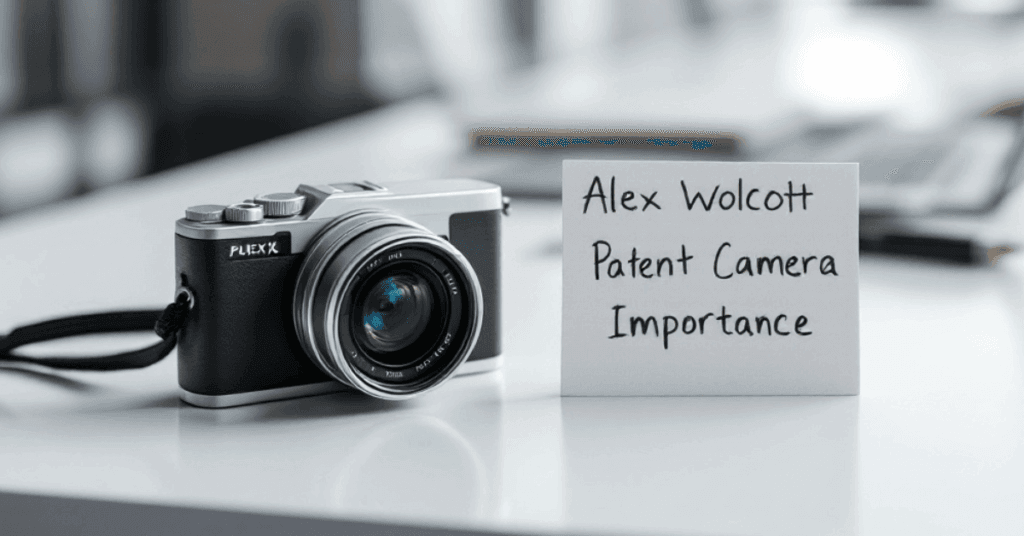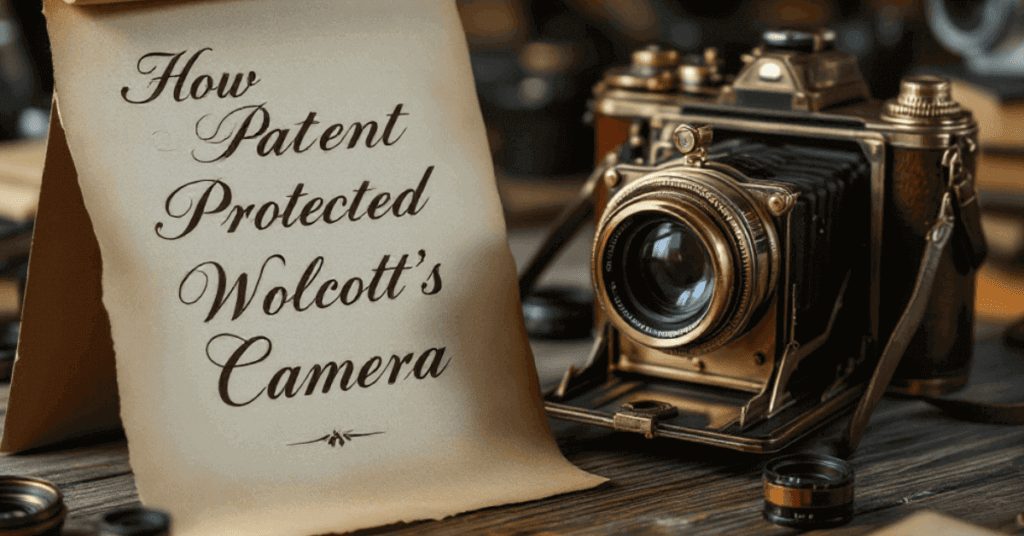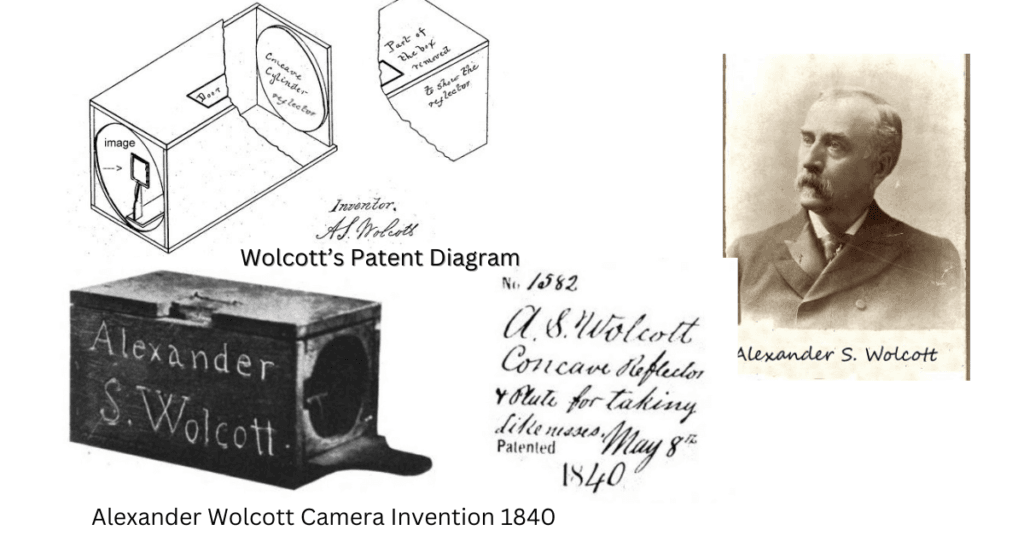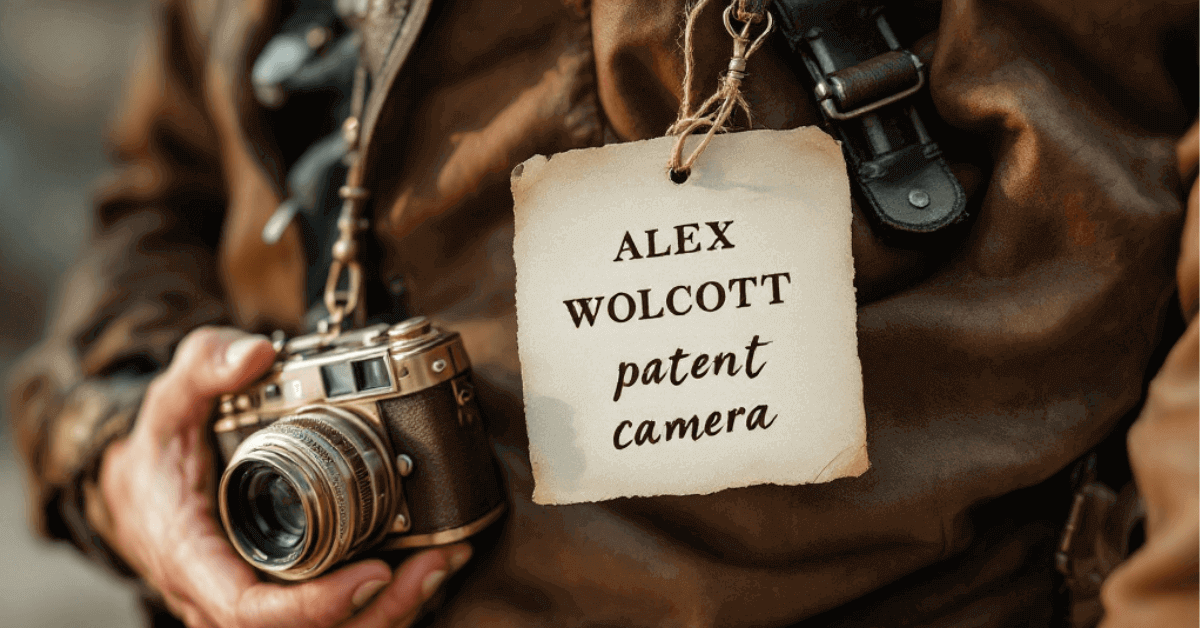Imagine a time when capturing a moment took hours. Thanks to Alexander Wolcott, that all changed in 1840. The Alex Wolcott Patent Camera, often referred to as the Alexander Wolcott Camera, is a key milestone in the history of photography timeline events. It refers to a specific type of camera invented by Alexander Wolcott and patented in 1840.
This invention was so revolutionary that it became the first American patent issued in photography. But why was the S. Wolcott camera of 1840 important? What exactly did Alexander Wolcott invent that changed photography forever? Let’s uncover the exciting story behind this invention and its impact.
How Alexander Wolcott Changed Photography
Imagine living in a time when taking a photo meant standing still for hours. Alexander Wolcott changed all that with a brilliant design. His camera used a concave mirror to focus light onto a photosensitive plate. This meant:
- Sharper Images: The mirror made photos much clearer.
- Quick Snaps: Exposure times became much shorter.
With these breakthroughs, 1840 photography by Alexander Wolcott became more practical. In March 1840, Alexander Wolcott opened the first-ever photography studio in New York City. He called it a “Daguerrean Parlor” and used a special camera with a mirror instead of a lens to take small portraits.
Comparison with Earlier Methods
Before Wolcott’s invention, photographic methods like the daguerreotype required long exposure times and were difficult to use. Wolcott’s design reduced exposure times significantly, making photography more accessible and less complex for both photographers and subjects.
Challenges and Achievements
Wolcott faced several challenges, such as perfecting the use of the concave mirror and finding ways to make his invention practical for everyday use. His persistence paid off, leading to a camera that transformed the industry.
Why Was the Alex Wolcott Patent Camera Important?

The S. Wolcott camera or “Alex Wolcott patent Camera” of 1840 was a big deal for several reasons:
- Compact and Efficient: Earlier cameras were bulky and slow. Wolcott’s design was easier to use.
- Better Portraits: Wolcott’s camera used a concave mirror instead of a lens, which allowed for shorter exposure times. This was a significant improvement over the earlier daguerreotype process developed by Louis Daguerre.
- Birth of Photo Studios: Wolcott’s camera made it quicker to take photos. Because of this, photo studios became more popular and more people could get their pictures taken. This helped start the photography business we know today.
Impact of Shorter Exposure Times
Reduced exposure times made photography more accessible and less cumbersome for both photographers and subjects. It allowed for more natural and candid shots, as people no longer had to hold still for long periods.
Notable Early Photographs
Early photographs taken with Wolcott’s camera captured sharper and clearer images, setting a new standard in the industry. Photo studios that utilized his invention quickly gained popularity.
How Patents Protected Wolcott’s Camera

What’s a patent? It’s like a protective shield for inventors, giving them exclusive rights to their ideas. Wolcott’s patent meant no one could copy his camera without permission. Here’s why patents mattered:
- Earning Money: Wolcott could license his design or use it in his business.
- Encouraging Innovation: Knowing their ideas are safe motivates inventors to keep creating.
- Recognizing Genius: A patent officially credits inventors for their hard work.
By securing the first American patent issued in photography, Wolcott ensured his invention’s place in history.
Where Wolcott Fits in Photography History
To appreciate Wolcott’s camera history, let’s see how it fits into the history of photography timeline events:
- 1814: Joseph Niépce takes the first permanent photo using heliography.
- 1837: Louis Daguerre unveils the daguerreotype, the first practical photo process.
- 1840: Alexander Wolcott patents his revolutionary camera design, changing photography forever.
- 1851: Frederick Scott Archer develops the wet collodion process, improving photo quality.
Wolcott’s camera was the stepping stone that made photography a business.
Why Do Inventors Need Patents?

Imagine creating something amazing, only to have someone else copy it. That’s why patents are so important. They provide:
- Exclusivity: Only the inventor can make or sell their idea.
- Recognition: It’s proof of who came up with the idea first.
- Opportunities: Patents can be licensed or sold for income.
Thanks to his patent, Alexander Wolcott’s photography became more than just an idea—it became a legacy.
FAQs About Alexander Wolcott Patent Camera
The earliest cameras, called “camera obscura,” date back to ancient times. But the Alex Wolcott Patent Camera of 1840 was the first U.S.-patented design for commercial use.
Wolcott’s use of a concave mirror made photos faster to take and clearer, making photography practical for businesses.
He created a camera with a groundbreaking design that received the first American patent issued in photography.
Its concave mirror was the star feature, focusing light in a way that improved photo quality and reduced exposure time.
Patents protect an inventor’s work, giving them exclusive rights and encouraging innovation.
The Lasting Legacy of Alexander Wolcott
The Alexander Wolcott camera wasn’t just an invention; it was a turning point. It proved how combining creativity with legal protection could change the world. Every photo we take today owes a bit of its history to Wolcott’s brilliance.
Impact on Modern Photography
Modern cameras have evolved significantly from Wolcott’s invention, incorporating advanced technologies and features. However, the fundamental principles of capturing light to create images remain rooted in his pioneering work.
So, the next time you snap a picture, remember Alexander Wolcott. His work in 1840 photography paved the way for the amazing cameras we have now. Have an idea worth protecting? Don’t let your genius go unrecognized. Learn about patents and safeguard your inventions, just like Wolcott did.
Disclaimer: This article is for informational and educational purposes only. While efforts have been made to ensure accuracy, the author and publisher make no guarantees. Readers are encouraged to verify information independently. The author is not responsible for any errors or actions taken based on the information in this article.




